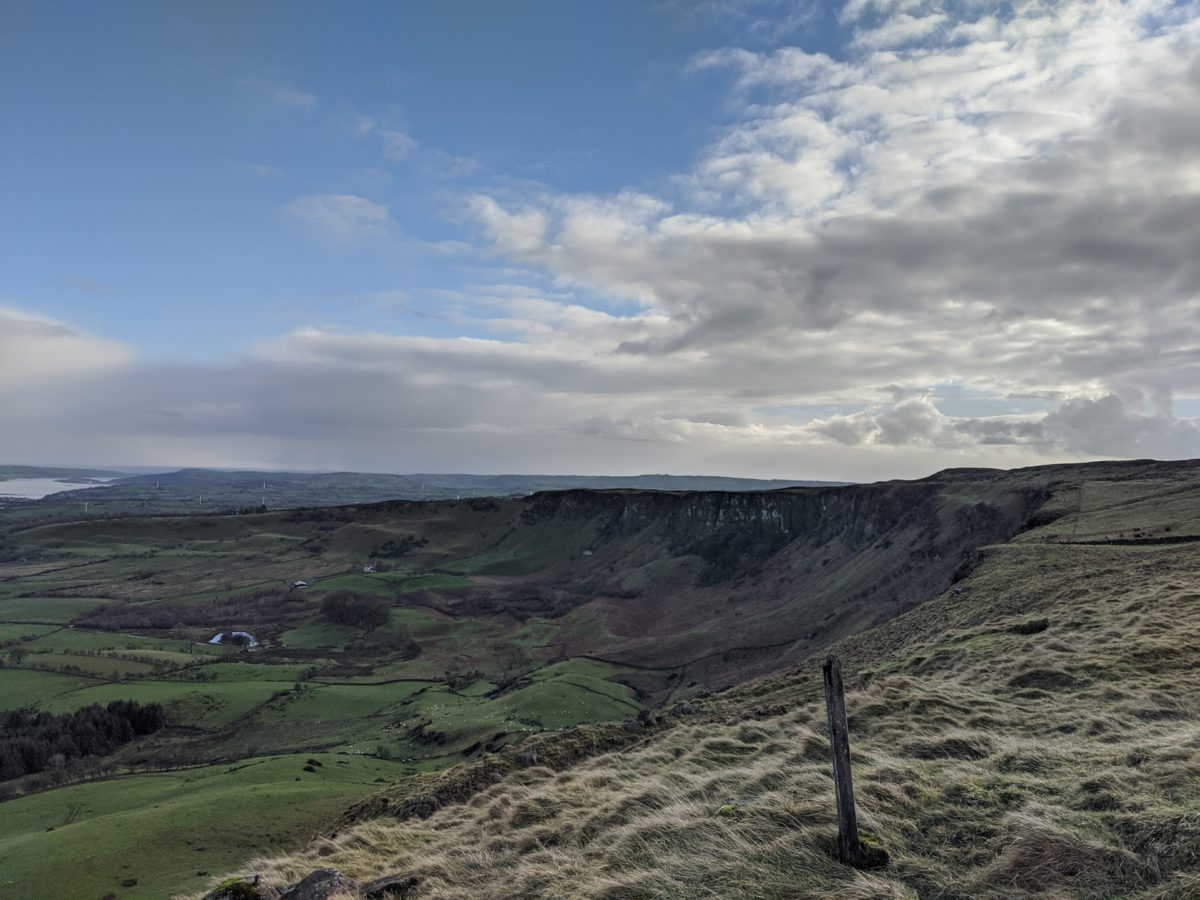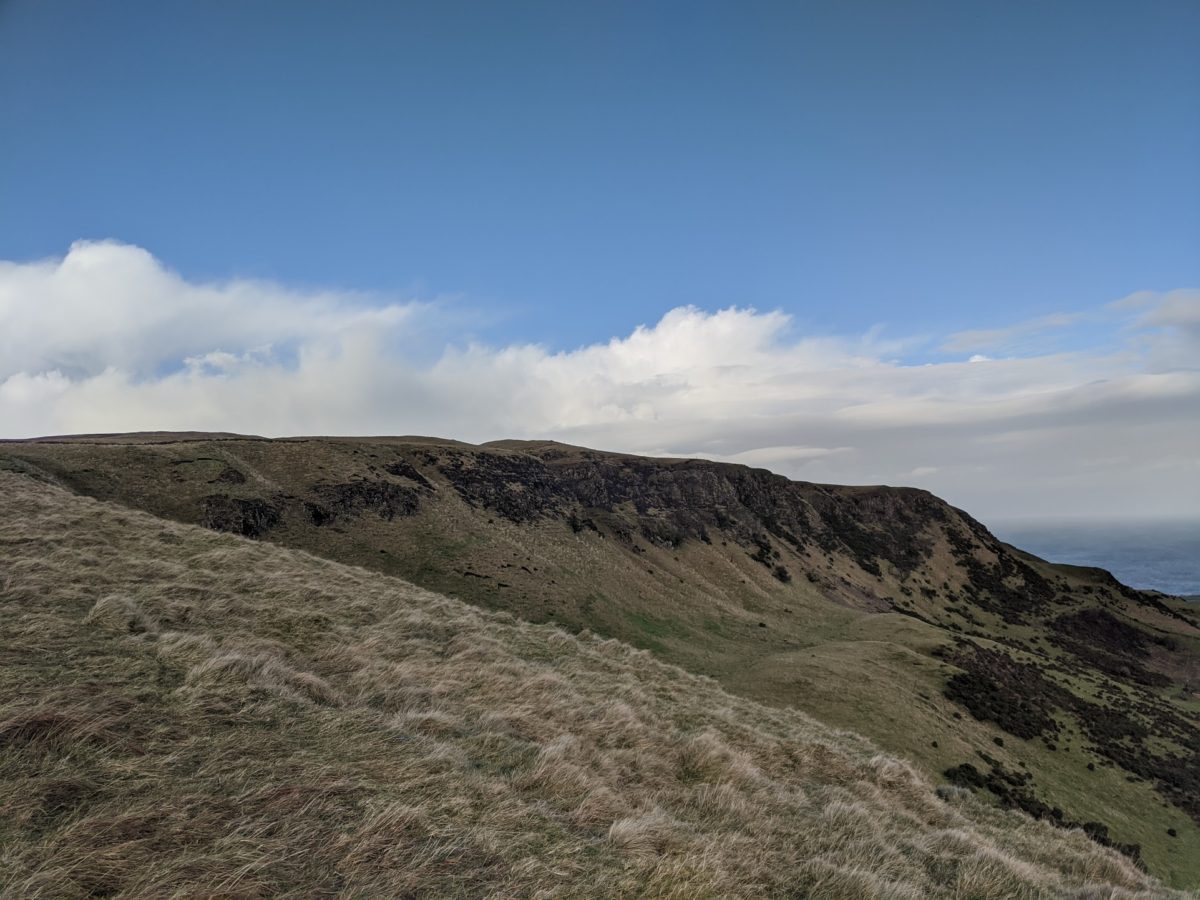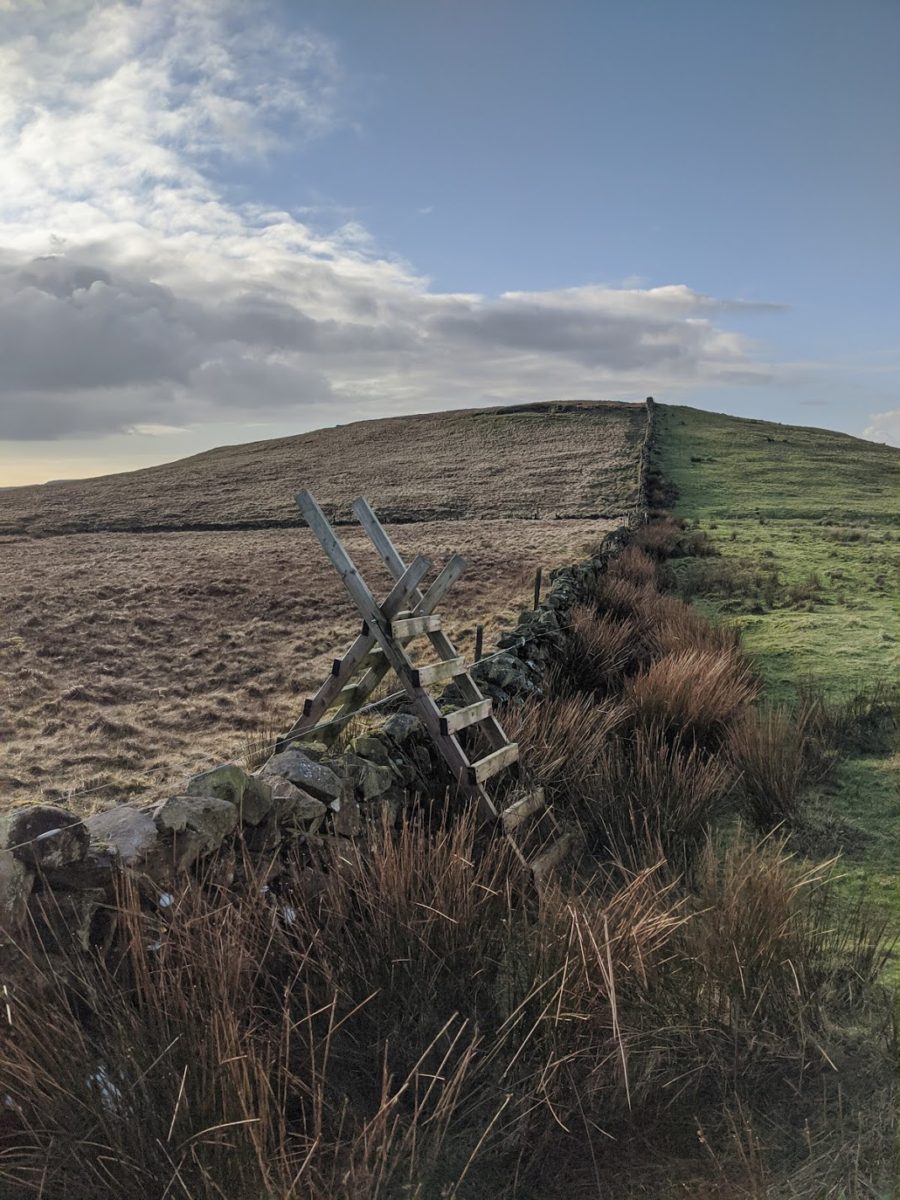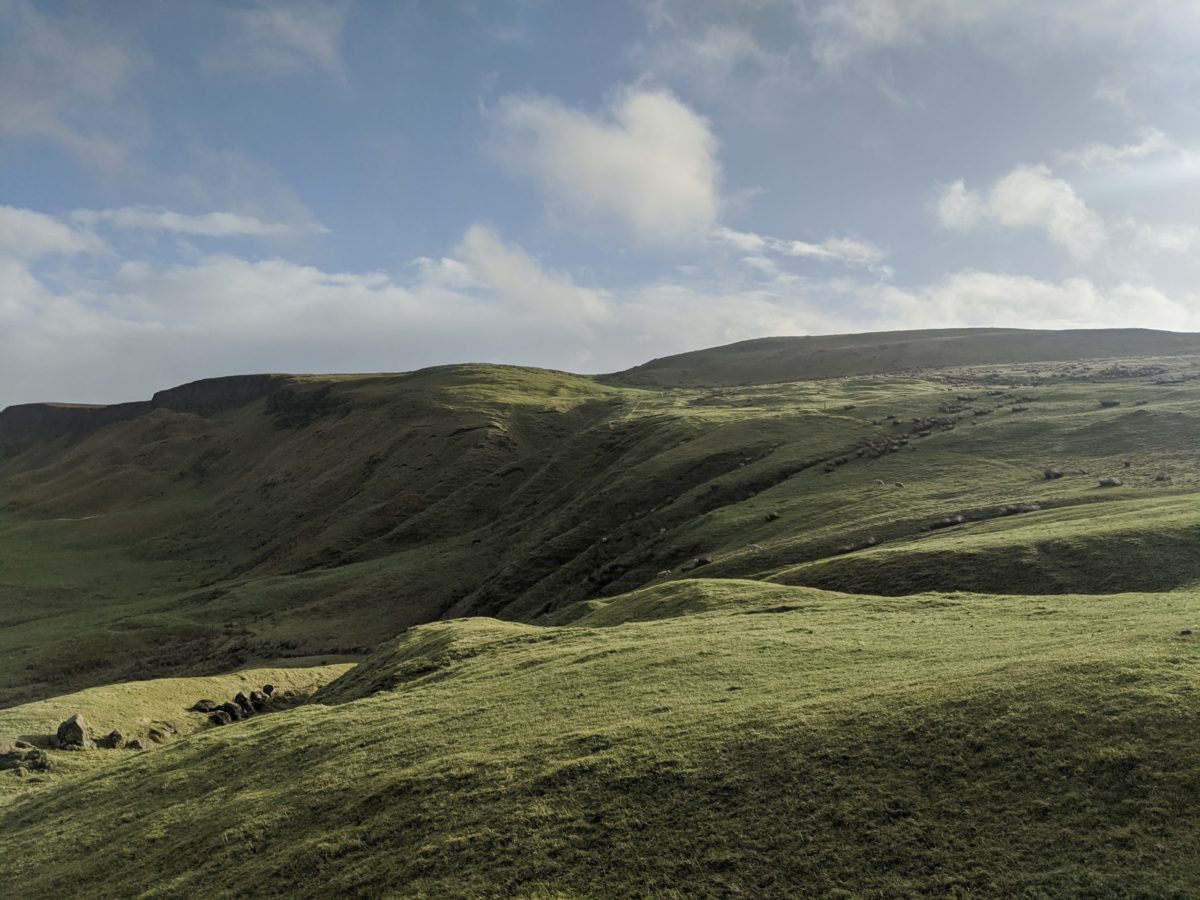Sallagh Braes – Things We Love: Great Hikes
The 2km long, 100m high natural amphitheatre of Sallagh Braes is loved by Game of Thrones producers, ecologists and us. Here's why
Posted on 1 July 2021 by Andrew M
We’re only going ten miles of so away from our base for this hike in our #ThingsWeLove series. And we absolutely love that we’ve got such a stunning geological feature so close to us. So everyone: please let me introduce you to Sallagh Braes.

Sally Braes? I think I went to school with her
Sallagh Braes are part of a ridge and high coastal plateau that sits at the east of the Antrim Hills. Right along this ridge, the land to the west meanders up and down gently, with Slemish often beckoning from afar.
But to the east, the ground falls away sharply. Thanks to the instability that comes with harder rocks (basalt and chalk) sitting on top of softer rocks (particularly Jurassic mudstone), glacial activity in the last ice age has left towering basalt cliffs. And those cliffs provide cracking views, whether the weather’s clear & bright or is a wee bit moody, from patchwork farmlands to the Irish Sea and across to Scotland, the Mull of Kintyre and the Ailsa Craig.

Game of Thrones Was Here
This area was used several times in Game of Thrones, including a memorable beheading right at the start of the series. As soon as you see the stunning backdrop for yourself, it’s easy to see why. Even the car park itself has amazing views, thanks the grassy slopes of Knock Dhu, the large spur that juts out towards the Irish Sea. But the crowning section is undoubtedly the Sallagh Braes themselves, a spectacular 2km long semi-circular amphitheatre, rising 100m above the lower coastal lands below.
Area of Special Scientific Interest
This is also a unique area, environmentally, with Knock Dhu and Sallagh Braes having been declared an ASSI because of the variety of earth science features, habitats and species they support. There is an impressive range of different habitats within a small area, thanks to the cocktail of cliffs, gullies and grasslands.
As a result, you can find a surprising number of rare species here, particularly mosses including Brown Screw-moss (once thought to be extinct in Ireland until found at the Sallagh Braes), Fringed Extinguisher-moss, Oeder’s Apple-moss and Downy Veilwort*. You might need to be Spiderman to see them, though!

Hiking the Sallagh Braes
There are several ways of enjoying this hike. But our favourite is the longest option, a proper 13 mile, 5-6 hour linear trek along the Ulster Way, starting with an ascent of Agnew’s Hill (474m), then heading north across a series of summits between 300-400m in height, giving a total ascent of over 450m/1,500 feet. With a mix of terrains, from stony to grassy to boggy, and starting in forest before heading onto open moorland, we think this is one of the most enjoyable upland routes in the Antrim Hills, on a dramatic patch of ground offering unbelievable views. Which is why we love it.

Come check it out! And just give us a shout if you’d like someone to guide you
* PS: If you’re not at all convinced that mosses warrant being mentioned, have a read of this